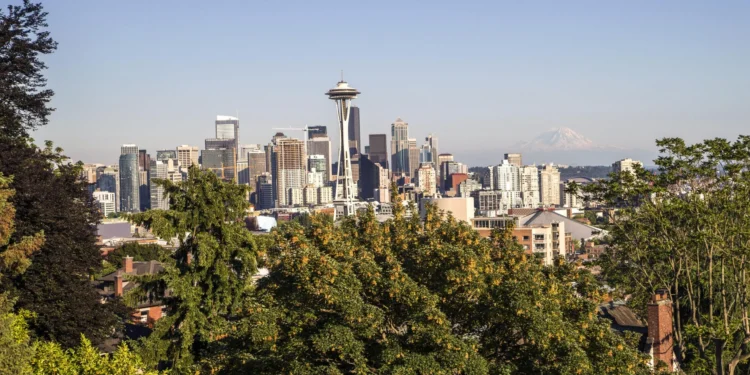Seattle Mayor Bruce Harrell signed a new executive order Tuesday aimed at enhancing tree preservation on private property, directing city departments to develop policies and regulations that encourage tree preservation.
“As we work to build the housing that Seattle needs to grow and thrive, we must also protect the trees that cool our neighborhoods, clean our air and water, and contribute to our overall climate resilience,” Harrell said.
The initiative builds on a three-year effort to protect and expand the city’s urban forest while ensuring equitable distribution of canopy cover, according to the mayor’s office.
Harrell emphasized the importance of an inclusive approach to tree preservation, complementing existing efforts to plant new trees and maintain Seattle’s reputation as the Emerald City.
Key actions in the order include creating a conservation easement incentive program for private property owners, supported by a $100,000 investment in the proposed 2026 budget. Additionally, the order calls for engagement with federally recognized Tribes to preserve historical and cultural resources on private property and updates to the stormwater code to support tree canopy goals.
“The Suquamish Tribe applauds the City of Seattle’s efforts to protect and preserve cultural and natural resources in our ancestral territory. Chief Seattle, in his 1854 speech given at Pioneer Square, said ‘every part of this soil is sacred in the estimation of our people.’ We look forward to working with the Mayor and the City Council in implementation of this Executive Order in our respective efforts to respect our traditions and restore our fragile ecosystems,” said Chairman Leonard Forsman, Suquamish Tribe.
Seattle remains committed to achieving 30% canopy coverage by 2037, having nearly doubled tree plantings since 2022 with 30,000 new trees, the mayor’s office said.
The executive order navigates the tension between Seattle’s housing development needs and environmental preservation goals, acknowledging that densification often results in mature tree removal on private property where new housing projects are built.
Conservation easements provide tax incentives or other benefits to property owners who agree to preserve significant trees on their land, creating a voluntary alternative to regulatory mandates that can face opposition from developers and property rights advocates.
The $100,000 budget allocation for the conservation easement program represents a modest initial investment that may need expansion if the program proves popular among property owners with significant trees.
Tribal engagement in the order reflects growing recognition of Indigenous cultural connections to Seattle’s landscape and the role of traditional ecological knowledge in urban forestry management.
The stormwater code updates likely aim to credit tree canopy toward stormwater management requirements, incentivizing developers to retain trees that intercept rainfall and reduce runoff rather than relying solely on engineered stormwater infrastructure.
Seattle’s 30% canopy coverage goal by 2037 remains ambitious, particularly as the city simultaneously pursues aggressive housing development targets that often conflict with tree preservation on developable parcels.







